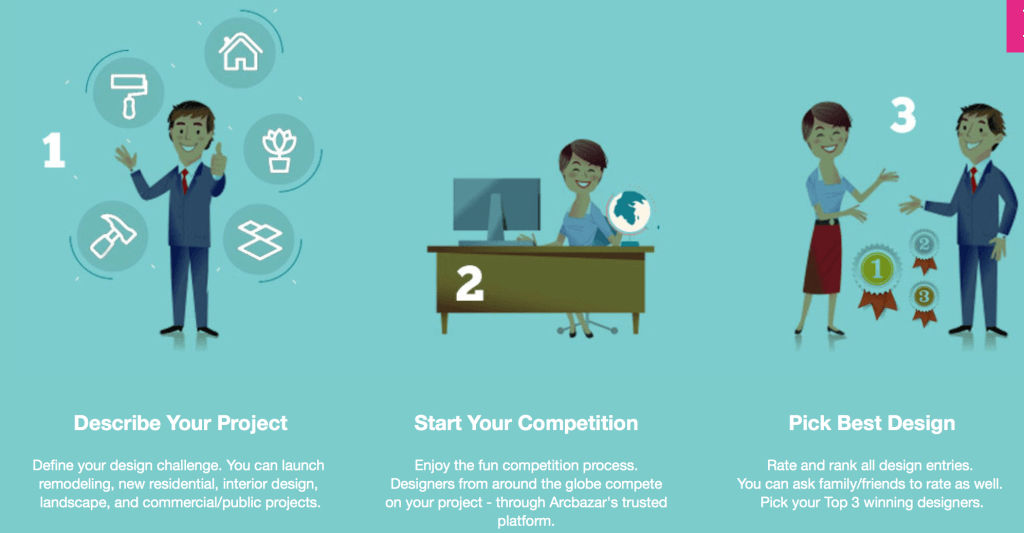ArcBazar: A marketplace for crowdsourcing architecture and design

ArcBazar is an online crowdsourcing platform focused on design and architecture projects, enabling people to easily find designers for their projects and at the same time, doing so in a very affordable way. On the other side, compete and collaborate on different contest, enabling them to learn, participate in a community and make money!
General Description
ArcBazar is an online crowdsourcing platform focused on design and architecture projects, enabling people to easily find designers for their projects and at the same time, doing so in a very affordable way. On the other side, compete and collaborate on different contest, enabling them to learn, participate in a community and make money!
ArcBazar is based in Cambridge, Massachusetts and was founded in 2010. Its name is inspired by the idea of a bazaar for architecture – “a vibrant space for an exchange and negotiation of design services”. More than 1.000 design competitions have been posted since 2011 (where the marketplace model started). More than 50.000 projects have been posted in the platform, sourced from designers from more than 190 countries.
!
How ArcBazar works?
Any person can define and post a design competition, in a very broad set of choices. From kitchen a renovation job to even modeling a retail space, the client describes the overall project, uploads reference images, sets the timeline, provides basic dimensions and sets a monetary award to the future contest participants.
Once the project profile is uploaded, it is enlisted in a “competitions” page and there, designers can sign-up to participate in these enlisted design challenges. The client then selects and ranks its best three alternatives and the monetary award he/she has set is distributed to the 3 finalists (60% to 1st place, 30% to 2nd place and 10% to third place)
The team verifies all competition projects and distributes aliases to designers for each competition. This allows designers to keep anonymous, and at the same time, ensures a meritocratic criterion for ranking decisions.
The client also can “hire a designer” and the idea is very similar to that of the competition: The client has to describe the project and offer a flat fee. The project post will get e-mailed all designers and interested designers can apply to the project. Then, the client can review their work and hire one of them directly or, alternatively, the client can also check the “Top 50 Designer Charts” and click on the “Hire” button on the designer’s portfolio page.
Value creation and capture
Clients can easily and quickly identify and reach designers from multiple countries and skills. Also they save a lot of money in the process, given that the award they set is significantly smaller than they amount of money they would pay for a specific design job
Designers can easily source projects to work on, without any kind of “obligation”, managing their own schedule and work load. Also, they can learn a lot in the process, given that they are immerse in a “designer community”. Finally, they get paid if they are among the three first places in any competition or when they are hired by any client
There is no fee at all associated for competitions for neither clients nor designers. Actually, the only way ArcBazar captures the value from the whole platform is when clients decide to hire a particular designer. When they do so, ArcBazar charges a 10% of the flat fee that the client has defined for the specific project.




I love this concept. I’d be really suspicious of adverse selection here. The fees are “low” but not super low… it seems like for a small project they suggest at least $1,250+. Thats great if you get an awesome design that you end up building… its also a huge waste if you get crap. I wonder how they navigate around that problem, if at all.
I also notice that these are architectural “concepting” competitions. I wonder if/how they can expand into other parts of the architectural stack, such as finished construction drawings, engineering support, permitting, etc. to give folks a one stop shop for getting their project done.